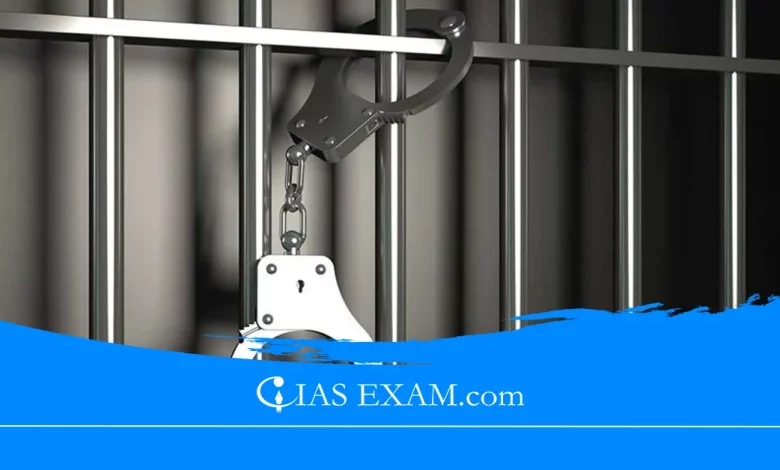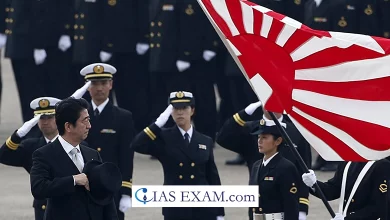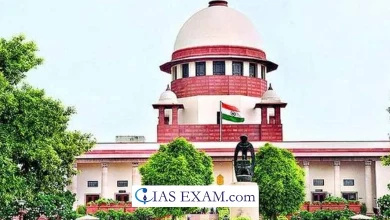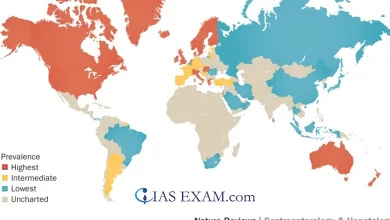
Context
Recently, the Supreme Court of India underlined that ‘there is a pressing need’ for reform in the bail law and stressed the government to consider a special legislation on the lines of the law in the United Kingdom.
Key Findings
- Bail is a significant aspect of the criminal justice system in India, permitting an accused individual to be released from custody under certain conditions.
- The concept of bail may be traced back to historical times, with references found in Kautilya’s Arthashastra.
Types of Bail
- Regular Bail: Granted to someone who has already been arrested and kept in police custody.
- The person can follow for bail under Section 437 and 439 of the CrPC.
- Interim Bail: A brief bail granted for a brief period before the listening to for the grant of regular or anticipatory bail.
- Anticipatory Bail: Granted under Section 438 of the CrPC, it’s miles a path to release a person on bail, even before the person is arrested.
Current Bail Laws in India
- The Code of Criminal Procedure, 1973 (CrPC) governs the terms of bail in India.
- It does not explicitly define ‘bail’ but it does define the terms ‘bailable offence’ and ‘non-bailable offence’ under Section 2(a).
- Sections 436–450 of the CrPC govern the provisions relating to bail.
- However, the Supreme Court has mentioned that the cutting-edge bail legal guidelines have caused overcrowded jails and hasty arrests.
- Bail Provisions in Bhartiya Nagrik Suraksha Sanhita (BNSS):
- It seeks to update the Criminal Procedure Code, 1973 (CrPC) and brings about tremendous changes in the bail provisions.
Key Changes in BNSS from CrPC
- Police Custody: The BNSS permits up to 15 days of police custody, which can be permitted in components for the duration of the preliminary 40 or 60 days of the 60 or 90 days duration of judicial custody.
- It may cause denial of bail for the complete period if the police have no longer exhausted the 15 days custody.
- Multiple Charges: The CrPC provides for bail for an accused who has been detained for half of the maximum imprisonment for the offence.
- The BNSS denies this facility for anybody facing multiple charges. As many instances contain expenses under a couple of sections, this may limit such bail.
- First-time Undertrial: The BNSS includes a provision for bail if the accused serves half the most punishment throughout the trial.
- Simplified Bail: The meaning of bail has been simplified for the duration of the BNSS.
- Bail in acquittal cases is also simplified.
- Relaxed Punishment: First-time perpetrator to be given relaxed punishment (one-fourth and one-sixth of such punishment) in plea bargaining.
Need for Reform
- The Supreme Court, in its Satender Kumar Antil vs CBI (2022), recognized the issues in the bail system and urged the government to remember introducing a law in the nature of a Bail Act to streamline the grant of bail.
- The Supreme court also highlighted the dire situation of jails and talked about overcrowding of undertrial prisoners, indiscriminate arrests, and so on.
- Overcrowding in Prisons: Over 75% of India’s prison population are undertrials, which is frequently attributed to the ineffectiveness of India’s bail device.
- Presumption of Innocence: The principle of ‘presumption of innocence’ is frequently unnoticed because of the large number of undertrial prisoners.
- The principle that ‘bail not jail’ should be the norm is often breached rather than observed.
- Socio-Economic Barriers: The present day bail regulation disproportionately burdens those from marginalised backgrounds and is regularly visible as anti-poor.
- Lack of Empirical Evidence: There is a need for empirical proof to apprehend the precise nature of the hassle that results in large-scale undertrial incarceration.
Proposed Changes inline with the UK
- The Supreme Court recommended framing the regulation at the traces of the Bail Act of the UK (1976) that recognises bail as a ‘preferred proper’ and specializes in lowering overcrowding of undertrial inmates in prisons.
- One of the important features of the Act is its aim to reduce the size of the inmate population.
- It makes provision for prison useful resources limited to questions of bail in certain instances and for legal resources for people saved in custody for inquiries or reports. Its Section 4(1) raises the presumption of bail by declaring that the law applies to someone who shall be granted bail besides as furnished in Schedule 1 to the Act.
Conclusion
- The name for bail law reform in India is an enormous step toward ensuring justice and upholding the rights of the accused. It is hoped that the authorities will take into account the advent of a separate enactment in nature of a bail act to streamline the grant of bails.
- The proposed reforms aim to strike a balance between the person’s right to personal freedom and the interest of society.
Source: The Hindu
UPSC Prelims Practice Question
Q.With reference to India, consider the following statements:
- Judicial custody means an accused is in the custody of the concerned magistrate and such accused is locked up in a police station, not in jail.
- During judicial custody, the police officer in charge of the case is not allowed to interrogate the suspect without the approval of the court.
Which of the statements given above is/are correct?
(a) 1 only (b) 2 only
(c) Both 1 and 2 (d) Neither 1 nor 2
Ans: “b“





.png)



